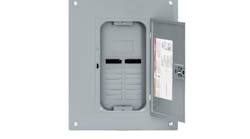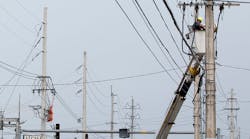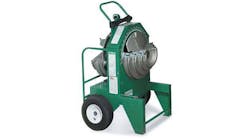The electrical market is still buzzing from ABB's announcement last month that it would acquire Thomas & Betts Corp., Memphis, Tenn., for $3.9 billion. The move will expand its reach deep into the North American electrical market and help T&B market its products more broadly overseas.
Much of the industry chatter EW's editors have heard over the past month related to the acquisition is that the deal could work out to be a win-win for both companies, with ABB, Zurich, Switzerland, gaining access to the estimated 6,000 distributor locations in North America that stock T&B products, and Thomas & Betts now able to expand its business outside of North America, which currently accounts for approximately 22 percent of its total revenues.
ABB said in a press release announcing the acquisition that it believes the combined portfolio of its products and T&B's, plus the enhanced distribution network, will enable it to “double its addressable market in North America to approximately $24 billion.” ABB also said in a presentation available on its website that the acquisition would help it rebalance its sales mix. Before the acquisitions its sales were divvied up as follows: Europe (55%); Middle East, Africa and Asia (36%); and Americas (9%). After the T&B deal, its Americas region would account for 30% of sales, Europe would be at 43% of sales and the Middle East, Africa and Asia would stand at 27% of sales.
But the big focus of this acquisition appears to be on the complementary nature of the two companies' product families and the access to the T&B distribution network. According to an ABB press release, “The complementary combination of Thomas & Betts' electrical components and ABB's low-voltage protection, control and measurement products would create a broader low-voltage portfolio that can be distributed through Thomas & Betts' network of more than 6,000 distributor locations and wholesalers in North America, and through ABB's well established distribution channels in Europe and Asia.”
A big plus for ABB and T&B is that there appears to be very little overlap between the companies' product lines. According to the presentation on ABB's website, T&B's main focus is on connectors, terminals, insulation, wire management products, conduit, fittings, cable ties, and electricians' tools, while ABB focuses on circuit breakers, switches, control products such as terminal blocks, timers, relays, plugs/sockets, enclosures/DIN rail and boxes. The one area of overlap, according to that presentation, is enclosures/DIN rail and boxes, but ABB manufactures its products to IEC standards and Thomas & Betts' meet ANSI standards.
Industry observers are still marveling at the sheer size of the acquisition at nearly $4 billion, and many like to reminisce about the dozens of acquisitions that T&B itself made over the past 20 years to build its current stable of more than 45 brands and chuckle about the wild ride that consolidation provided for many independent manufacturers' reps who carried those lines. All in all, many of the reps with whom EW spoke at the recent NEMRA Conference saw the acquisition as a positive for T&B, a company tightly woven into the fabric of the electrical industry, having been founded 114 years ago by two young engineers from Princeton University, Robert Thomas and Hobart Betts, who, according to information at www.tnb.com, founded the company in 1898 when they “formed an agency for selling conduit to electrical distributors.”
The CEOs of ABB and T&B both struck a very positive note in the press release announcing the acquisition. Said Joe Hogan, ABB's CEO, “Thomas & Betts is a well-run company with strong brands and excellent distribution channels in the world's largest low-voltage products market. Because our products are complementary, we'll go to market with one of the broadest offerings in the industry. That creates strong growth opportunities for both ABB and Thomas & Betts, and gives customers and distributors one-stop access to one of the widest ranges of low-voltage products.
“Strategically, it's a great fit. This is another big step toward our goal of expanding our presence in the key North American market. The transaction clearly supports our 2015 growth and profitability targets, and meets all of our return-on-investment criteria for creating shareholder value.”
Dominic Pileggi, T&B's chairman and CEO, said in that release that the acquisition is good for the company's shareholders and will enable Thomas & Betts to accelerate its global growth strategy.
“The combination will also enable us to provide our North American customers and distributor network with a broader portfolio of products and will provide long-term opportunities to our employees,” he said. “This is the right time for this transaction and I believe strongly that ABB is the right partner for our business going forward.”
There's no doubt that ABB is serious about expanding its North American presence, judging from the amount of money it spent on the T&B acquisition, as well as its 2010 purchases of motor manufacturer Baldor Electric, Fort Smith, Ark., for $4.2 billion and its $1 billion-plus acquisition of Ventyx, Atlanta, a global supplier of software solutions, data and related services to optimize the operational and financial performance of energy, utility and other asset-intensive businesses.
And according to a recent Reuters report, other acquisitions could follow. Reuters said ABB Chief Financial Officer Michel Demare told the Boersen Zeitung newspaper last month that it's open to more acquisitions. “In the USA we're still partially under-represented, especially in automation we need to expand parts of our business via acquisitions to get market access for some of our products,” he said in that article. “On the technology side, and we want to sell more products to the oil and gas industry.”
Another news report said ABB appears to be outspending several of its rivals on M&As. According to a recent Bloomberg article, “Since 2010, ABB spent three times more on acquisitions than Schneider Electric SA (SU), and four times more than Siemens, data compiled by Bloomberg show.”








